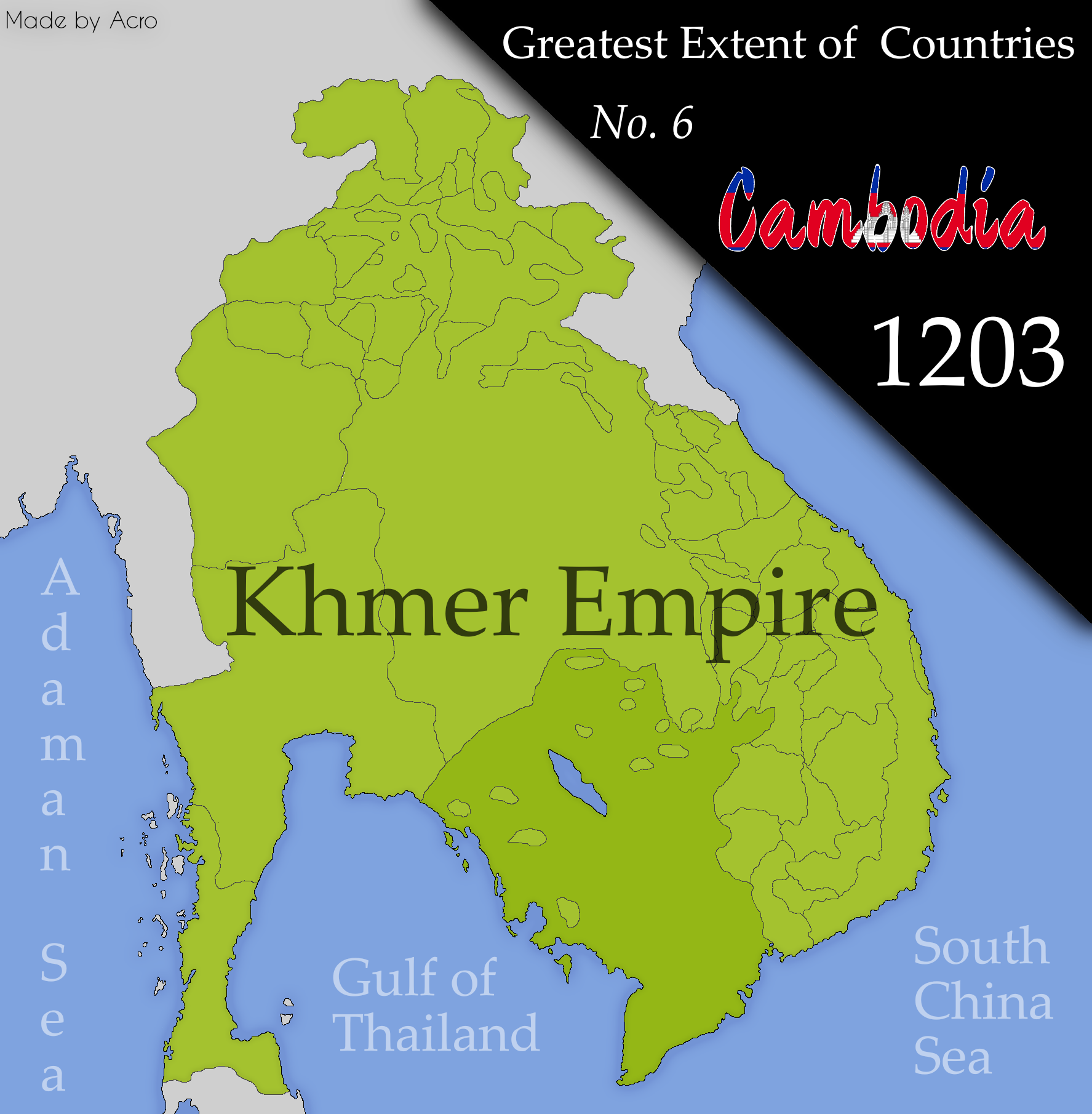Cambodia Territorial Extent Map


Alex Cartwright
Senior Cartographer & GIS Specialist
Alex Cartwright is a renowned cartographer and geographic information systems specialist with over 15 years of experience in spatial analysis and data...
Geographic Analysis
What This Map Shows
The "Cambodia at its Greatest Extent" map visually represents the historical territorial boundaries of Cambodia, showcasing its maximum reach during various periods, particularly during the Khmer Empire. This map provides insight into the geographical expanse of Cambodia, highlighting the regions that were once under its influence and control. Understanding these boundaries allows us to delve deeper into the cultural and historical significance of the areas that have shaped Cambodia's identity today.
Deep Dive into Cambodia's Historical Boundaries
Cambodia's historical boundaries reflect a rich tapestry of cultural and political changes over centuries. At its zenith in the 12th century, the Khmer Empire not only dominated present-day Cambodia but also extended into parts of Thailand, Laos, and Vietnam. This vast territorial claim is a testament to the empire's power and influence in Southeast Asia.
One of the most significant cities during this period was Angkor, which served as the empire's capital. Angkor was not just a political center but also a hub of cultural and religious activity, with grand temples such as Angkor Wat that still stand as a testament to the architectural prowess of the Khmer civilization. Interestingly, the city's layout and the construction of an extensive irrigation system highlight the advanced agricultural practices that supported a large population.
The Khmer Empire's expansion was primarily driven by agriculture, trade, and military conquests. The fertile lands surrounding the Mekong River and Tonle Sap Lake provided the resources necessary for sustaining its population. Have you ever wondered how such a vast empire managed its resources? The Khmer utilized a sophisticated water management system that allowed them to cultivate rice effectively, which was the backbone of their economy.
However, by the 15th century, the empire began to decline due to internal strife, external invasions, and shifting trade routes. This led to a significant reduction in its territorial extent. The map shows how Cambodia gradually shrank over the centuries, losing territories to neighboring states and colonial powers. Today, Cambodia's borders are defined by its current geopolitical landscape, which is a stark contrast to its historical reach.
Regional Analysis
Analyzing the map reveals distinct regions that played pivotal roles in Cambodia's territorial history. The northwestern region, including parts of what is now Thailand, was crucial for trade and military campaigns. These areas were strategically important as they provided access to vital trade routes and served as buffers against invasions from the west.
Conversely, the southeastern areas, bordering Vietnam, were significant for agricultural expansion. The Mekong River, which flows through eastern Cambodia, served as a lifeline, facilitating trade and communication. Interestingly, this river not only shaped Cambodia's geography but also its cultural identity, influencing customs, traditions, and settlement patterns.
In contrast, the mountainous regions in the northwest, such as the Cardamom Mountains, represented natural barriers that affected settlement and expansion. These rugged terrains were less suitable for agriculture, leading to a concentration of population in the plains and river valleys. This distribution has persisted into modern times, affecting urban development and infrastructure placement in contemporary Cambodia.
Significance and Impact
Understanding Cambodia's historical territorial extent is crucial for several reasons. First, it sheds light on the nation's cultural heritage and the historical context of its borders. The remnants of the Khmer Empire are not only architectural marvels but also symbols of national pride and identity for Cambodians today.
Moreover, the historical context informs current geopolitical relations in Southeast Asia. The legacy of territorial claims and cultural exchanges continues to influence diplomatic relationships between Cambodia and its neighbors. Current trends indicate a growing interest in regional cooperation, particularly in areas like trade and environmental sustainability, which echo the interconnectedness that existed during the Khmer Empire.
As Cambodia looks to the future, understanding its past will be essential for navigating the complexities of modern-day diplomacy and cultural preservation. The map serves as a reminder of the vast potential that once existed and the ongoing journey of a nation reclaiming its historical narrative while building towards a sustainable future.
Visualization Details
- Published
- October 16, 2025
- Views
- 54
Comments
Loading comments...